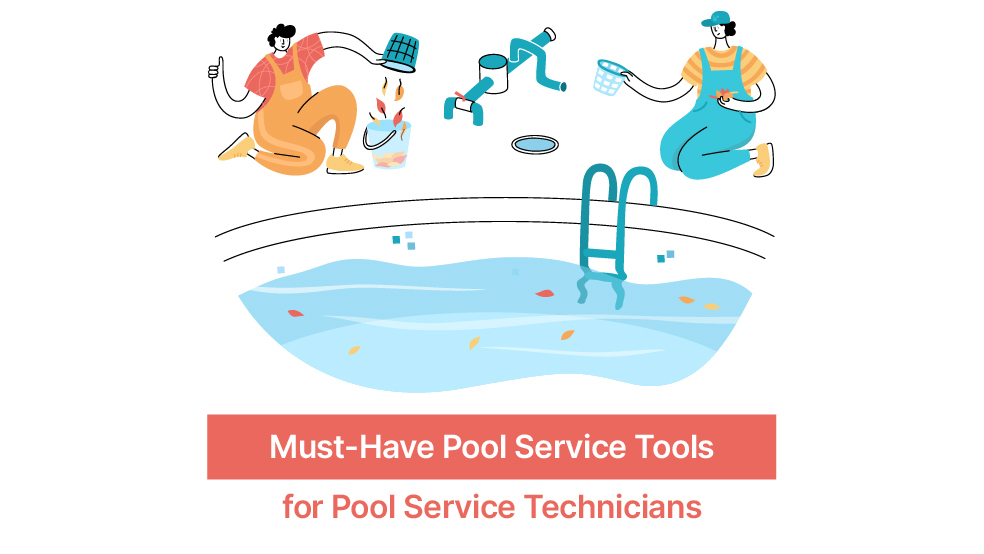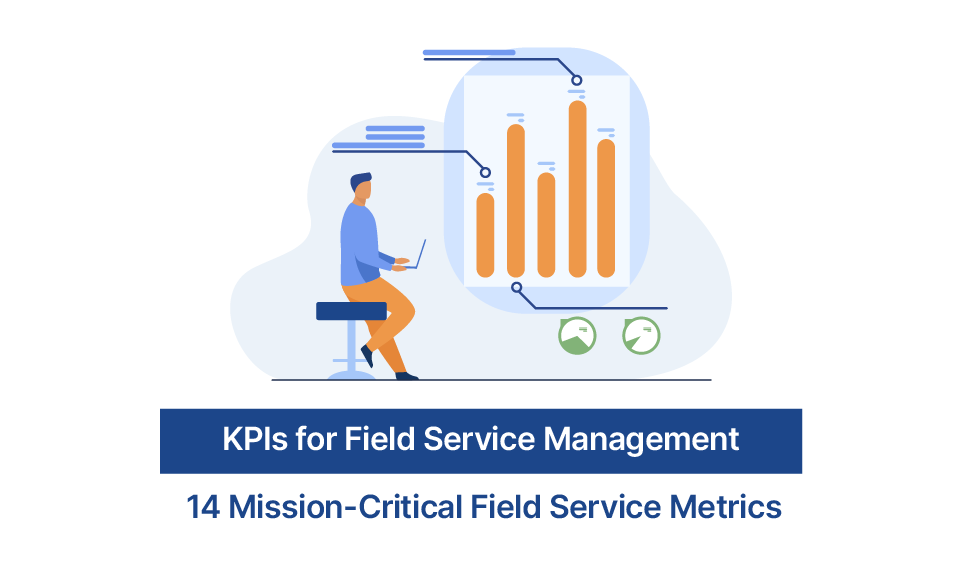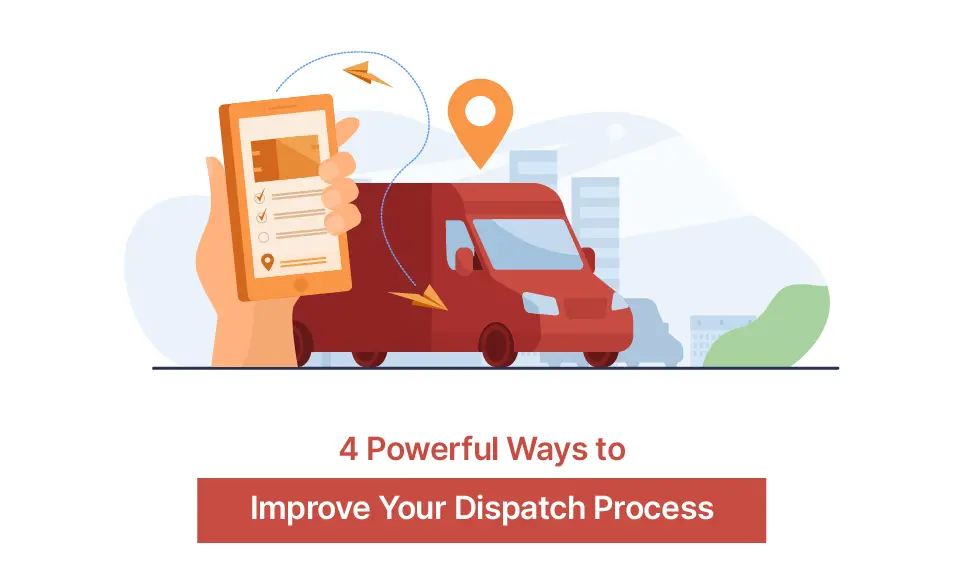All Blogs

Pricing Strategies to Boost Your Lawn Care Business Profits
The pricing strategy of lawn care services can make or break your residential lawn care service. Deciding a proper rate for your services helps you propagate your business speedily, meeting success in the near future. The way you price your service also impacts the number of clients you attract and the profit you make. So, it becomes really important to start on a good note. The article will help you understand the pricing of your lawn care services so that you can have a profitable start to your business. Follow the 8-step process listed below to price your residential lawn care services at your best. Factors to consider when setting lawn care prices When you set prices for lawn care, think about how much it costs to do the work, like pay for workers, things you need, and tools. Also, think about costs that are not direct, like having insurance and bills. If the work is hard, like planning gardens or taking care of trees, you might need to ask for more money because it needs special skills. At different times of the year, you might need to change how much you want to be paid. It’s good to look

7 Highly Effective Pool Service Marketing Tips for Taking Your Business to the Next Level
If you are a pool cleaning business entrepreneur, you probably might be struggling with two questions: How to market your new pool business effectively? How to take a larger slice of the pie by getting an edge over the competition? This article answers these questions with 7 powerful pool service marketing tips to promote and grow your pool cleaning business. 1. Offer exceptional customer service Marketing your pool cleaning business starts with your existing clients. If you want your business to be successful, you need to have repeat clients. Your repeat customers do not only provide you with a steady income, but they also promote your business through word of mouth. Offer them more than they expect and make them come back for more. Here is how you can do, Spend some time knowing your clients. Connect with them at a personal level. Be consistent with your service every single time. Send appointment reminders, then follow up with them through a text of when you will be heading over. Make sure you are on time. Once you are done, do not forget to say goodbye. If the client isn’t around, text them to let them know you are leaving. Always

Must-Have Pool Service Tools for Pool Service Technicians
[vc_row][vc_column][vc_column_text]Swimming pool service technicians perform a wide range of pool cleaning services. They can’t expect customers to have pool service tools ready for their usage and it is a best practice to carry all essential tools upon receiving a service request. Pool service technicians should carry basic tools as well as specialized pool tools to be completely prepared for the pool cleaning and pool service job.We have drafted this blog to help pool service businesses shortlist essential pool service tools and create a rock-solid pool technician tool kit. Here you can learn everything about essential tools and replacement tools every pool service technician needs to have in their tool kit.[/vc_column_text][vc_column_text] Pool cleaning tools Pool leaf rakes Leaf rakes are the most frequently used pool cleaning tool and your pool service technicians cannot go without them. It is the most effective tool if your pool service technicians want to quickly skim the surface and dredge the floor.Leaf rakes have a larger surface area than the flat skimmer net and have deep pockets to hold a larger amount of wet leaves. Leaf rakes come with a soft rubber rim and a sturdy aluminium frame and that makes them the perfect tool to

Predictive Field Service Management – 3 Tips for Adding Predictability to Field Service Business
What is predictive field service management? Predictive field service management uses data to help gain insight into the performance of field service teams, business trends and manage the mobile workforce effectively.With the help of data, predictive field service management helps: Ensure your field service workers are working at their optimum efficiency and productivity Predict parameters that would affect service delivery Provide more accurate estimates for work completion Why is predictability important for field service management? Field service management needs predictability for several reasons, including: Reduce technician stress Increase technician utilization Reduce unscheduled downtime caused by system failures Improve consistency across all repairs Build a more predictable revenue line How to add predictability to your field service business? Here’s the approach for implementing predictability in your field service business: Gather as much data as you can Becoming predictable in field service management starts with collecting data. This will give you an idea of your regular as well as daily, monthly, weekly recurring tasks. It will further give you insights into the work volume, work type, and inventory. With the help of Zuper’s field service management software, you can collect huge amounts of data that will help in knowing exactly when you’ll
List of 10+1 Essential Landscaping Tools Every Landscaper Needs
Investing in high-quality landscaping tools is going to multiply your returns and also help deliver brilliant service to customers.

The 5 Best Cleaning Business Software Tools for Your Business in 2024
Cleaning business software helps streamline the day-to-day cleaning business operations effectively. These cleaning business tools leverage the power of automation enabling cleaning business companies to save time, cut costs, increase productivity, and manage their maids and cleaners easily. Modern cleaning business software streamlines all core cleaning business operations from scheduling and booking to invoicing and payment processing.Depending on their needs, cleaning businesses can either opt for simple cleaning business software that automates their everyday administrative tasks like scheduling, dispatching, and more. Or they can choose a cleaning business solution that handles strategic parts of operations like employee timesheets, website SEO, and more.Selecting the right cleaning business software is a cumbersome process that involves a ton of planning and assessment. Before you choose your ideal cleaning business software, you have to assess your requirements and evaluate the available cleaning business software options thoroughly. To help you with the search, we have composed a list of the top five cleaning business software in 2024. Top 5 cleaning business software in 2024 The cleaning business software market is overflowing with options. Selecting the right tool in such a crowded market may be daunting. To help you narrow down your search, we have identified

How to Get Your First Landscaping Customers – A Step by Step Guide
So you’ve decided to launch your lawn care or landscaping business.Great!Well, you might get a mixed feeling of excitement and nervousness because you need to find your first lawn care clients, right? And, yes! It is, however, much easier than you think.Getting new landscaping customers isn’t always easy – especially when homeowners believe they can handle all of their lawn care chores themselves or refuse to spend hard-earned dollars on their lawn.If you’re just getting started, your main concern will be attracting more lawn care customers as quickly as possible. After all, if you don’t have enough customers, your landscaping business will fail. Getting a foothold among your target customers and distinguishing yourself from your local competition, on the other hand, can be challenging. So, what is the most effective way to attract lawn care customers? Before that let’s take a step back and see why you should start a landscaping business in the first place. Why landscaping business? Starting a landscaping business is a good option for someone who wants to be their boss, set their schedule, and work on their terms. To put it another way, you get to be the master of your business. Investing in your

House Cleaning Pricing 101 – How Much to Charge for House Cleaning Services in 2024
How much should you charge your customers for house cleaning services? There is no “one size fits all” answer or magic formula to help you decide what to charge for your house cleaning services. Deciding on a price point can be tricky.While you want your house cleaning pricing to be competitive, you want to make enough to cover the labor, cleaning supplies, and overhead costs. You need to keep in mind certain things when deciding the right house cleaning price for your services. This guide will help you come up with a price point that’s competitive and profitable at the same time. House Cleaning Pricing: 7 Factors to Consider There are several factors you need to consider while deciding your house cleaning pricing, but the 7 most crucial ones are discussed below: Calculate Labor Costs How many employees do you have? How much do you pay them hourly/daily/monthly? Even if you are the only one doing the cleaning, don’t forget to pay yourself. Determine their hourly rate and multiply it with the number of workers required to do the cleaning job. Then add 18% payroll to that. That’s your bare minimum amount, and it doesn’t factor in your overhead costs

How to Hire the Right Staff for Your Cleaning Business?
Your cleaning staff is the cornerstone of your cleaning business. They interact with your clients and provide services that keep those clients coming back for more. But finding good staff is by far the most challenging part of a cleaning business. There are a lot of factors that you need to consider while hiring employees – do they know their job well? Are they trustworthy? Will they stay with you for long? We understand your predicament, and that’s why we have prepared a handy guide for you on how to hire the best people for your cleaning business. Hiring a Cleaning Staff – 5 Traits to Look For Firstly, you need to know what you are looking for in an employee. If you start the hiring process without knowing what kind of an employee you want, you will likely hire the wrong people. So, here are five characteristics to look for when hiring employees for your cleaning business: Friendliness. Your cleaning staff will often communicate with your clients on your behalf. In a way, they are the face of your company to your clients. So, make sure that they are friendly and able to make a good impression. Experience. A

The Ultimate Guide to Digital Marketing for Pool Service Business
]Marketing strategies are evolving. In this digital age, there are a ton of new opportunities to bring your swimming pool cleaning business closer to customers. Digital marketing is one such reliable strategy that must be included in your business plan. It helps you promote your swimming pool service business both organically and through paid promotions. The main purpose of digital marketing is to promote your pool cleaning business in a way that garner’s customer’s trust. It is not only cost-effective but you can also track the effectiveness immediately.By implementing digital marketing strategies you can achieve desired marketing goals like acquiring customers across multiple channels. While digital marketing campaigns are not that complex to understand, but it may be hard to kick start one. Listed below are seven critical digital marketing strategies that you can use to increase pool service business sales and revenue. 1. Optimize your website Websites are a crucial element in reaching the right customers. So, it is time to either create one from scratch or ramp up your existing website. Do’s and don’ts Keep your home page simple so that the audience can focus on content. Don’t simply list out the services you provide, instead showcase

KPIs for Field Service Management: 14 Mission-Critical Field Service Metrics
KPIs are important for businesses to meet their objectives and track their return on investment (ROI). If the KPIs are not identified and monitored, it’s almost impossible to know how the organization is performing and what needs to be done to meet the company goals.For a field service business, aligning the KPIs with the company’s strategic goals is an excellent place to start. Field service metrics can be tailored to the daily workflow and challenges of field service operations.This article lists the different KPIs you need to set up for your field service management staff based on their job roles. So, let’s get started. The KPIs for Field Service Management Although KPIs are essential for field service companies, they can deliver mission-critical data only if you choose the right ones. Using the right KPIs effectively can increase productivity, improve customer service, and boost profits.Here are fourteen core field workforce management KPIs you can track for each job role: KPIs for Dispatchers and Schedulers Time to first contact Getting in touch with customers as soon as they indicate their interest increases your chances of sale and engages the customer from the very start. If you don’t track this KPI, your prospective

4 Powerful Ways to Improve Your Dispatch Process
Efficient dispatching is the linchpin to successful field service management. It plays an essential role in delivering an excellent customer experience. In the cutthroat world of field service management, you need to pay attention to your dispatch management process

7 Smart Ways to Manage HVAC Maintenance Contracts More Efficiently
In the HVAC business, your existing heating and cooling service agreements and maintenance contracts are your bread and butter. However, if you want to grow your HVAC business, your current customers aren’t enough; you need to explore new opportunities and create new service agreements down the line.The real challenge here is juggling between servicing your existing clients and picking up new clients. If these service contracts are not managed effectively, it can lead to disorganization and confusion, eventually hurting your business and negatively impacting your customer service. So, how can you manage HVAC maintenance contracts more efficiently? Let’s find out. 1. Streamline your business operations with a service management system. Automation is key to business success. With the help of field service management software, you can automate business processes that are manual and repetitive.Zuper’s service management software is powered by AI and machine learning. It is designed to automate tasks like scheduling, work order management, creating quotations, invoicing, and other aspects of HVAC services that help you manage your HVAC contracts effectively. 2. Create a balanced mix of existing HVAC maintenance contracts and new leads. Managing new and existing clients often get challenging for HVAC businesses. For instance, if you

The Ultimate Guide to Lawn Care Marketing & Advertising
Looking to give your lawn care business a marketing boost? Now’s the perfect time to take action! Effective marketing is essential for your lawn care advertising as it helps you stand out in a competitive market and attract new customers. To achieve this, it’s crucial to use a mix of traditional and digital marketing tailored to your specific business needs. In this comprehensive guide, we’ll walk you through effective strategies to kickstart your lawn care advertising and supercharge your marketing efforts. From creating compelling advertisements to leveraging social media and online platforms, we’ll cover everything you need to reach your target audience and drive growth. Amplify your business reach with online and digital strategies Online and digital marketing allows you to boost the business’s visibility and accessibility. Customers who go online can seek information about products and services with just a click of a button. You must reach them easily through various online and digital platforms. Moreover, online marketing helps you communicate with your customers in real-time. Here are some ways you can market and advertise your lawn care business online. Create a lasting first impression with an optimized website A business website is usually the first thing that people

7 Different Types of Carpet Cleaning Services to Offer
Carpet cleaning is a science in itself. Not all carpet stains, scratches, scuffs, and tiffs can be fixed with a universal carpet cleaning method. If you often wonder, “Do different types of carpets need different types of cleaning?” Yes, you do! And, it is not just with different types of carpets. Sometimes the same carpet may require two or more types of carpet cleaning services to be fixed properly. If you are new to the carpet cleaning industry and looking for a reference guide that lists different types of carpet cleaning techniques in detail, then you are at the right place. We have tuned our internal obsessive housekeeper, researched everything from IICRC’s standard reference guide for professional carpet cleaning to seeking insights from cleaning industry experts for drafting this blog about different types of professional carpet cleaning. The science of carpet cleaning involves much more than different types of cleaning methods. In order to get a carpet sparkly clean, the first thing you need to do is evaluate the carpet itself. Identify the construction, color, age, traffic patterns, and soiling conditions of the carpet. Only then, you can decide upon an ideal cleaning method that consists of different aspects like

8 Effective Ways to Manage Your Field Business Workforce
Managing a company’s workforce, especially in an asset-intensive field, can be challenging.

7 Reasons You Need Swimming Pool Service Software
There’s no room for argument. To fulfill the demands of a paranoid customer base like uberized experiences, self-service technician tracking, and more, swimming pool service providers need to invest in the right pool service software. A simple move from a paper-based system to an online spreadsheet environment won’t cut it anymore. Spreadsheets and other outdated tools pave the way for a landmine of errors. Just a simple copy-paste error can end up in a scheduling mix-up and cost you a customer or ruin your reputation. The lack of access control can result in instances where your confidential customer data is compromised. A recent report from IOFM shows that businesses that use outdated manual tools spend around $6 to process an invoice. On top of that, almost two-thirds of businesses report expensive invoicing errors as a result of their manual invoicing process. You need a swimming pool maintenance solution that automates your operations end-to-end to provide the touch-free experience your customer base craves. If you are one of those people who believe that you can tide over another year or two without investing on the technology front, read on to know the seven reasons why you need swimming pool service software

Top 9 Strategies to Grow Your Landscaping Business in 2024
At some point in the lifetime of your landscaping business, you’ll come to a crossroads that will make you think, “Am I happy with what I have, or do I want to grow?” If you want to grow your business, your focus should not only be on bringing in new business; it should also focus on closing more landscaping leads, optimizing the business, and improving your profit margins. According to a survey, 68% of consumers say they are willing to pay more for products and services from a company that offers good customer service experiences. 65% of customers said they have changed to a different company because of a poor experience. What does this data tell us? You need to provide what the customers are asking. If you plan to grow your landscaping business, the first question you need to ask yourself is: Is your business currently equipped to provide what your customers are expecting? If not, your chances of survival are bleak, let alone grow. While hundreds of landscaping business growth strategies are likely to exist, the following 9 will take your business to the next level quickly and efficiently. Tips for Growing a Landscaping Business 1. Increase your
7 Powerful Tips for Generating More Pressure Washing Leads
Most entrepreneurs take on a lot of challenges to get their business off the ground, and thereafter as well. However, the two greatest hurdles they face in their businesses are gaining customers and making a profit.If you own a pressure washing business, your struggles are no different. But, if you want to overcome these challenges and make your business a success, you have to make your services desirable and well-known. 7 Tips to Generate More Pressure Washing Leads Relationship Marketing Strategies Your relationship with your customers is a crucial aspect of your business. Good customer relationships translate into loyal customers who stay with you for years. How can you use relationship marketing to get more pressure washing contracts from existing customers? Call them up You can call your existing customers to either share a promotion or simply check-in to see if they are interested in booking a service. Use emails and postcards to re-engage them Send thank you messages or specific promotions to get your customer’s attention. Try to tell your unique company story through newsletters. Pro-Tip Zuper CRM integration lets you maintain customer records and filter them out whenever needed. This makes it easier for your team to pull

When’s the Last Time You Updated Your Swimming Pool Cleaning Checklist?
A swimming pool cleaning checklist simplifies the routine pool maintenance process and prevents inconsistencies. However, an incomplete swimming pool cleaning checklist is almost worse than not having one. An incomplete list can give a false sense of completion and lead you to believe you got everything even though you missed something significant. There are many aspects involved in proper pool maintenance and operations; failing to complete them will only spell trouble.Fortunately, fixing a checklist is easy. If you are planning to create a cleaning checklist from scratch or looking for ways to plug the gaps in your existing checklist pdf, you are in the right place.Before getting to the checklist, we should look at the pool cleaning process and understand its nuance. Listed below are some activities that, when performed regularly, cover the basics of caring for a swimming pool. Pool Cleaning Checklist Brushing and Vacuuming While a normal filtration process will remove a considerable amount of dirt and grime, proper brushing and vacuuming will help remove sediments that settle at the walls or the bottom of the pool. Additionally, it will make the plaster finish of the pool shine and prevent any chances of scaling, straining, and algae formation

11 Things You Didn’t Know About Electrical Safety Tips
Being an electrician can be dangerous! 97% of electricians have been either shocked or injured on the job. And that’s not all. There are 30,000 incidents of electric shock hazards recorded annually.
Learn More About
Zuper Today
Schedule a demo with our product experts and explore how you can improve your field service operations today.
